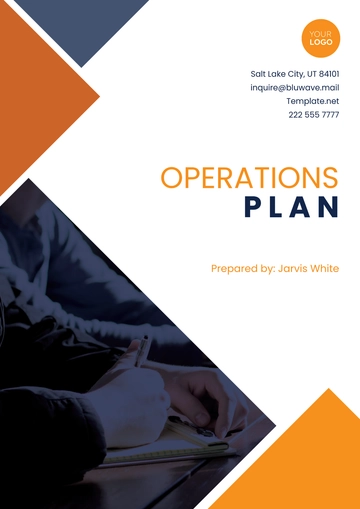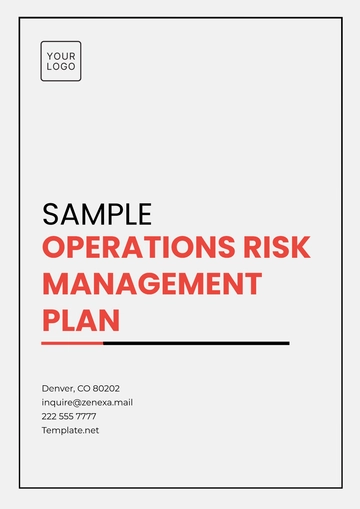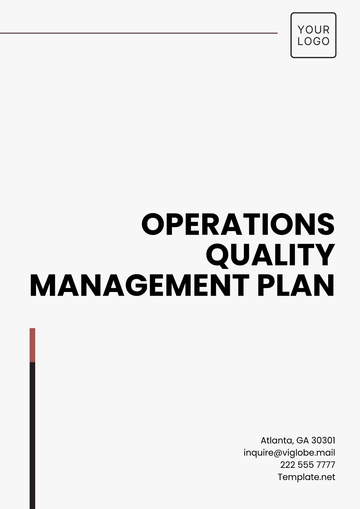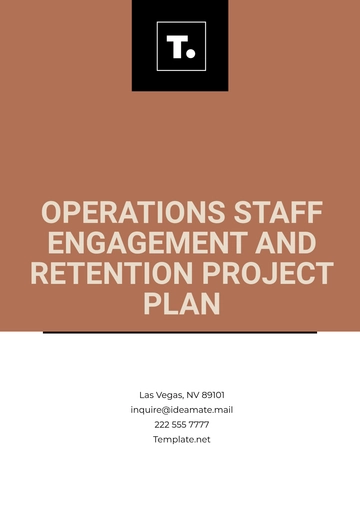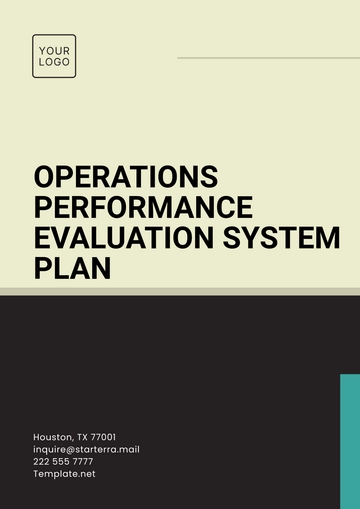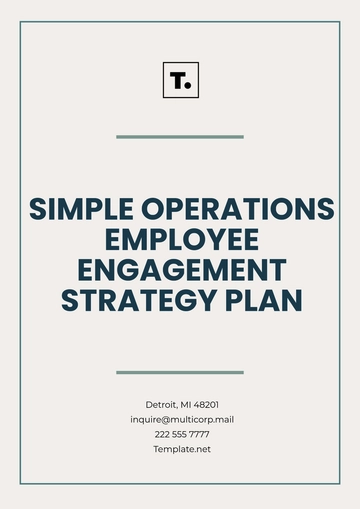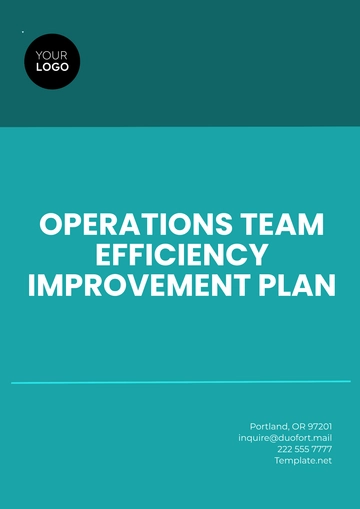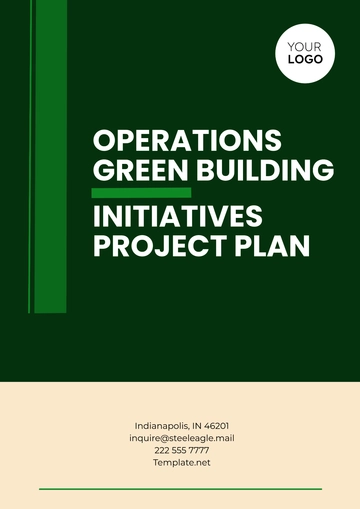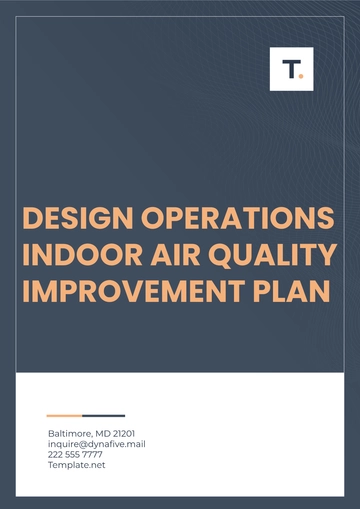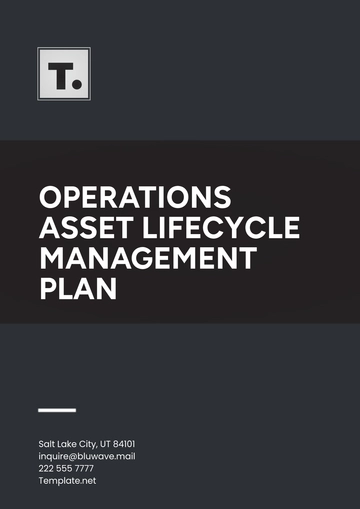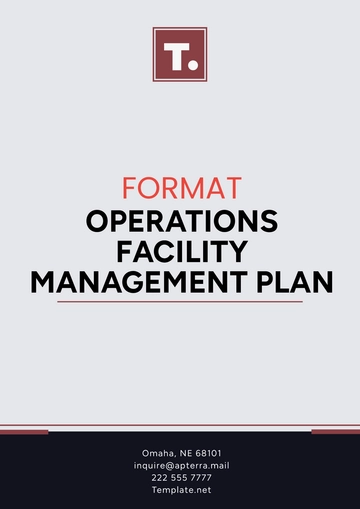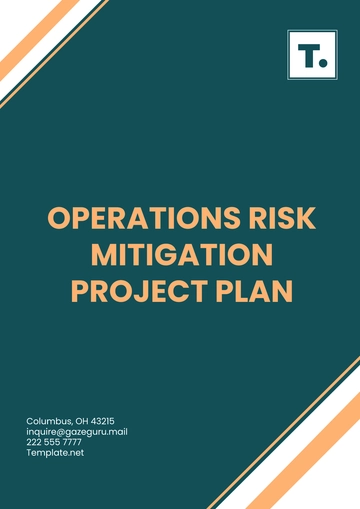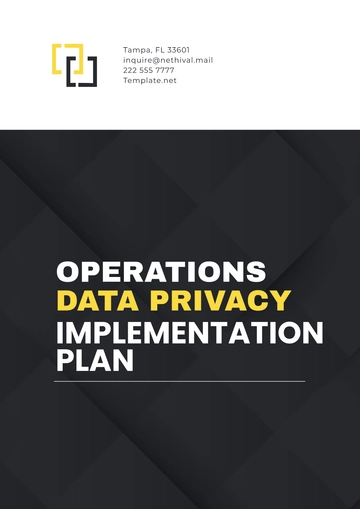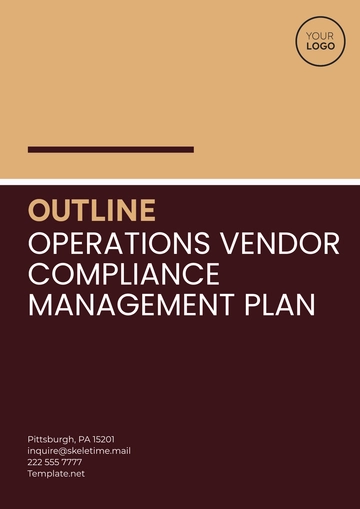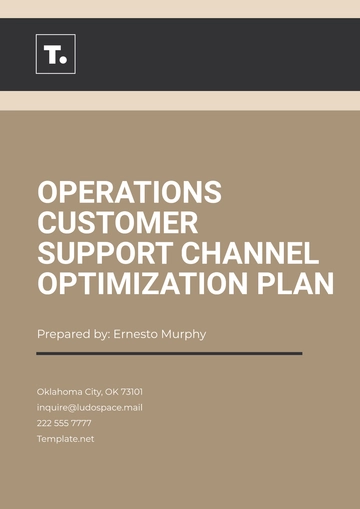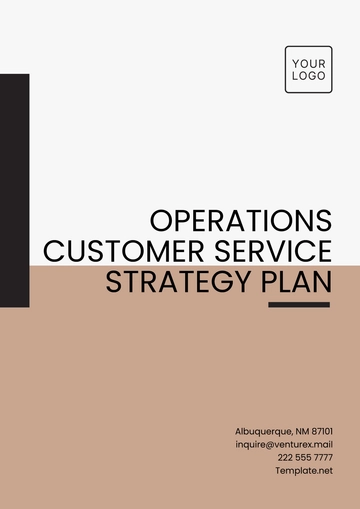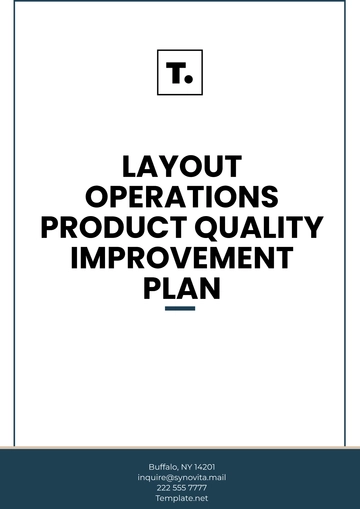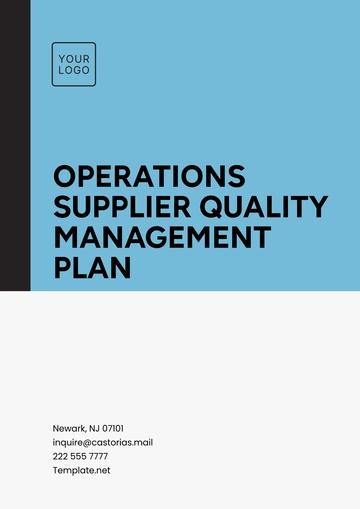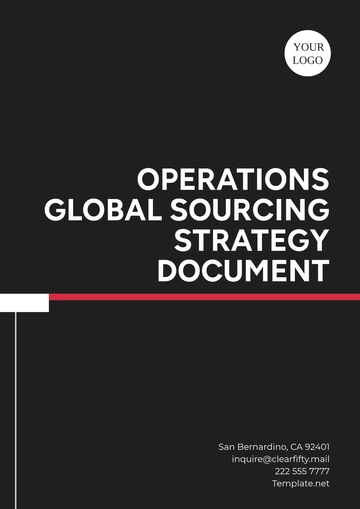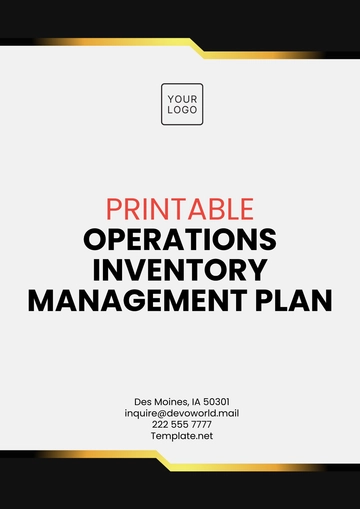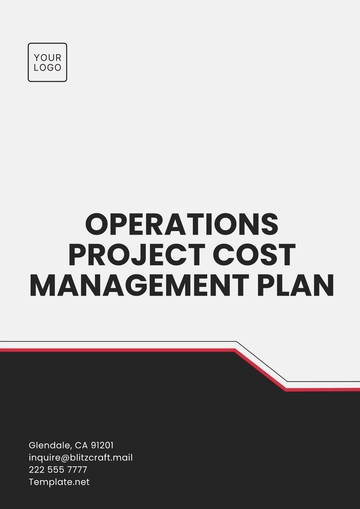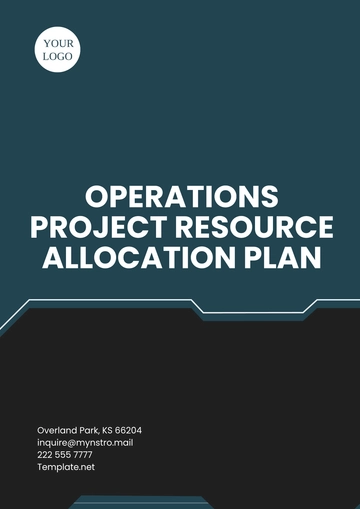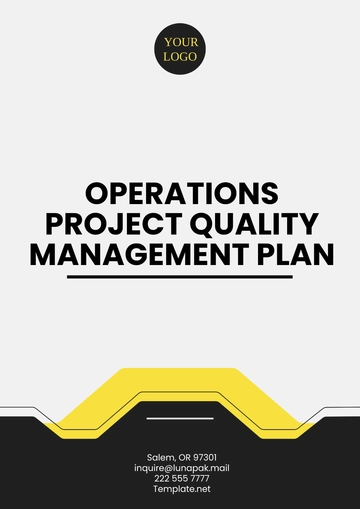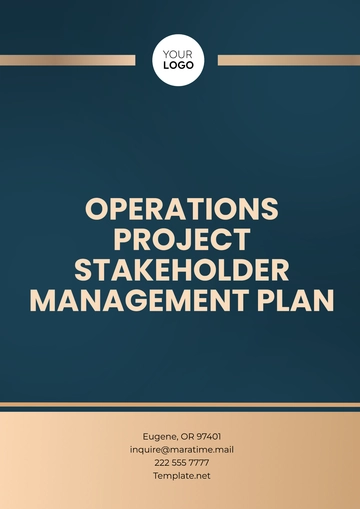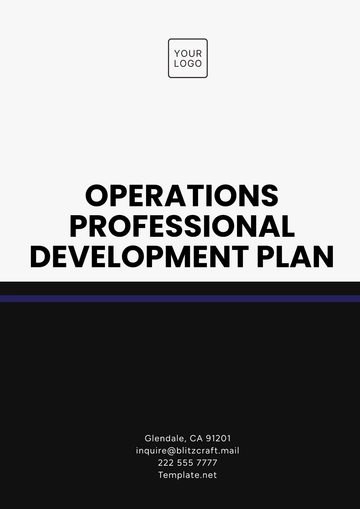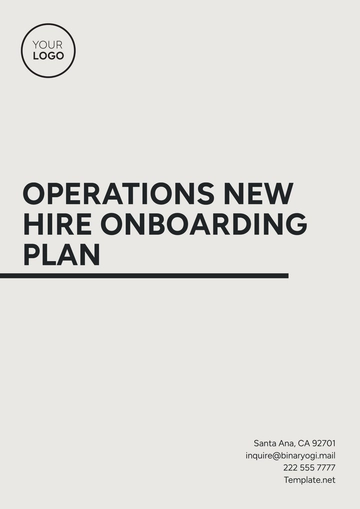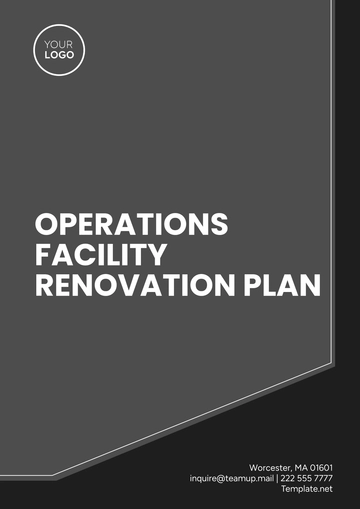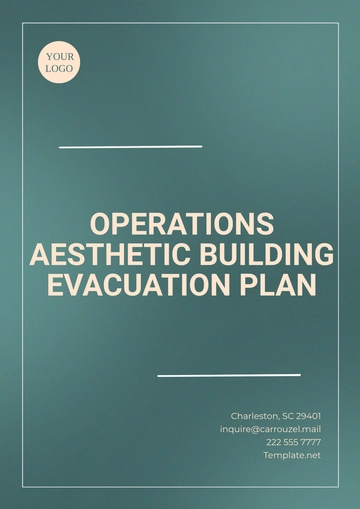Free Format Operations Facility Management Plan
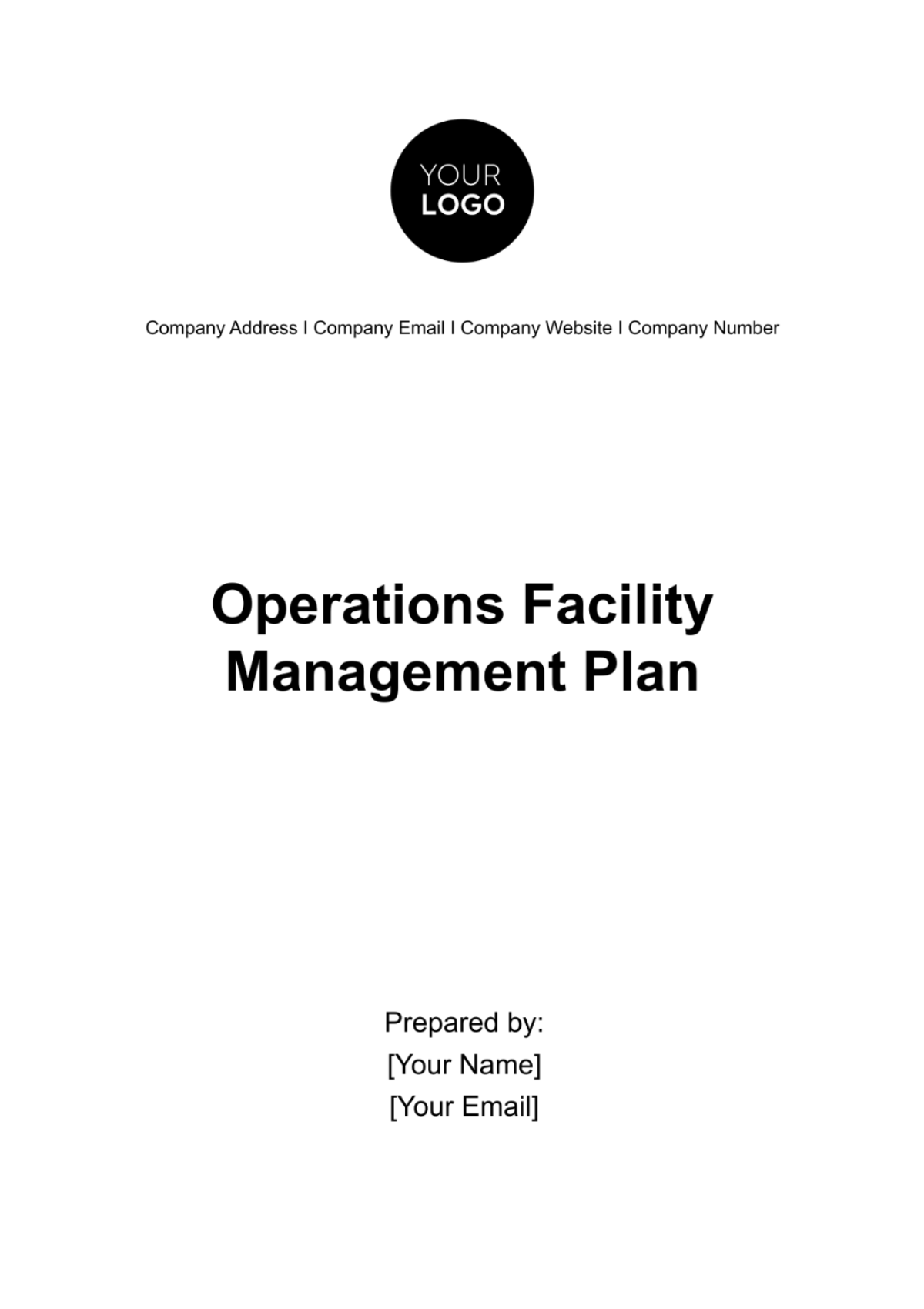
Prepared By: | [Your Name] |
Company: | [Your Company Name] |
Date: | [Date] |
Introduction
The Format Operations Facility Management Plan is a comprehensive framework that outlines the procedures, policies, and best practices for the management of facility operations. This plan is designed to ensure the smooth and efficient functioning of all aspects of the facility, including maintenance, safety, staffing, and compliance. It provides clear guidelines for handling day-to-day operations while prioritizing safety, security, and sustainability.
1. Facility Overview
1.1 Facility Description
Provide a detailed overview of the facility, including its purpose, size, location, and key infrastructure components.
Facility Name: [Insert Name]
Location: [Insert Location]
Purpose: [Describe the purpose of the facility]
Key Features: [List major assets or equipment]
1.2 Facility Operational Hours
State the operational hours of the facility, including holidays or exceptions.
Operational Hours: [Insert hours]
Holiday Schedule: [Insert schedule]
2. Operational Procedures
2.1 Daily Operations
Outline the essential daily tasks to be managed by the operations team, including regular facility checks, cleaning, and equipment inspection.
Daily Facility Checks: [List areas to inspect daily, e.g., HVAC, lighting, etc.]
Cleaning Schedule: [Specify frequency and areas to be cleaned]
Equipment Inspections: [Outline inspection frequency and procedure]
2.2 Emergency Protocols
Establish clear procedures for responding to emergencies, including natural disasters, fires, and accidents.
Emergency Contact List: [Provide contact information for emergency services]
Evacuation Plans: [Detail emergency exits and evacuation routes]
Fire Safety Protocols: [Describe procedures for fire drills, extinguisher locations, etc.]
3. Maintenance Management
3.1 Routine Maintenance
Define the schedule and responsibilities for regular maintenance tasks to prevent facility breakdowns.
HVAC System Maintenance: [Specify frequency and responsible team]
Plumbing & Electrical Inspections: [List routine checks]
Lighting & Equipment Upkeep: [Detail maintenance schedule for lighting, machinery, etc.]
3.2 Vendor and Contractor Management
Outline the process for hiring, managing, and evaluating external vendors and service providers.
Vendor Selection Criteria: [Describe selection process]
Contract Management: [Outline contract terms and expectations]
Performance Evaluation: [Define evaluation process for vendor services]
4. Health, Safety, and Compliance
4.1 Regulatory Compliance
Ensure the facility meets all required safety and environmental regulations by setting up internal and external audits.
Health and Safety Inspections: [Frequency and checklist]
Environmental Compliance: [List sustainability efforts and waste management practices]
4.2 Safety Training
Describe the ongoing safety training programs for staff to ensure a safe working environment.
Training Frequency: [Specify how often training will be conducted]
Training Content: [Detail topics such as fire safety, emergency first aid, etc.]
5. Staffing and Resource Management
5.1 Staff Responsibilities
Define roles and responsibilities for all staff involved in facility operations, from maintenance teams to security.
Operations Manager: [Insert responsibilities]
Maintenance Staff: [Detail key tasks]
Security Personnel: [List duties and security measures]
5.2 Resource Allocation
Outline the allocation of resources (staff, materials, equipment) for smooth daily operations.
Staff Scheduling: [Outline shift patterns and coverage]
Resource Budgeting: [Provide guidelines for resource usage]
6. Sustainability and Energy Management
6.1 Energy Efficiency
Set guidelines for energy usage and efficiency, focusing on cost savings and environmental impact.
Energy Consumption Monitoring: [Outline how energy consumption will be tracked]
Sustainability Initiatives: [List efforts such as recycling, energy-efficient systems, etc.]
6.2 Waste Management
Describe waste management practices to minimize the environmental footprint.
Recycling Programs: [List materials to be recycled]
Waste Disposal Protocols: [Detail waste removal process]
7. Review and Continuous Improvement
7.1 Performance Monitoring
Establish metrics and methods for evaluating the effectiveness of the facility management plan.
Key Performance Indicators (KPIs): [List KPIs for performance tracking]
Review Frequency: [Specify when and how reviews will occur]
7.2 Feedback and Improvements
Create a feedback loop for continuous improvement by collecting input from staff, vendors, and facility users.
Feedback Channels: [Detail how feedback will be gathered]
Improvement Action Plan: [Outline how feedback will be used to improve operations]
Conclusion
The Format Operations Facility Management Plan serves as the backbone for ensuring the efficient, safe, and compliant operation of the facility. By following this structured approach, organizations can optimize resource allocation, minimize operational disruptions, and enhance the overall functionality and sustainability of the facility.
- 100% Customizable, free editor
- Access 1 Million+ Templates, photo’s & graphics
- Download or share as a template
- Click and replace photos, graphics, text, backgrounds
- Resize, crop, AI write & more
- Access advanced editor
Discover the Format Operations Facility Management Plan Template from Template.net, your go-to solution for efficient facility management. This editable and customizable template empowers you to streamline your facility's operations, maintenance, and safety protocols. With easy editing features and compatibility with our Ai Editor Tool, effortlessly adapt the plan to your unique facility needs. Elevate your facility management with this comprehensive template.
You may also like
- Finance Plan
- Construction Plan
- Sales Plan
- Development Plan
- Career Plan
- Budget Plan
- HR Plan
- Education Plan
- Transition Plan
- Work Plan
- Training Plan
- Communication Plan
- Operation Plan
- Health And Safety Plan
- Strategy Plan
- Professional Development Plan
- Advertising Plan
- Risk Management Plan
- Restaurant Plan
- School Plan
- Nursing Home Patient Care Plan
- Nursing Care Plan
- Plan Event
- Startup Plan
- Social Media Plan
- Staffing Plan
- Annual Plan
- Content Plan
- Payment Plan
- Implementation Plan
- Hotel Plan
- Workout Plan
- Accounting Plan
- Campaign Plan
- Essay Plan
- 30 60 90 Day Plan
- Research Plan
- Recruitment Plan
- 90 Day Plan
- Quarterly Plan
- Emergency Plan
- 5 Year Plan
- Gym Plan
- Personal Plan
- IT and Software Plan
- Treatment Plan
- Real Estate Plan
- Law Firm Plan
- Healthcare Plan
- Improvement Plan
- Media Plan
- 5 Year Business Plan
- Learning Plan
- Marketing Campaign Plan
- Travel Agency Plan
- Cleaning Services Plan
- Interior Design Plan
- Performance Plan
- PR Plan
- Birth Plan
- Life Plan
- SEO Plan
- Disaster Recovery Plan
- Continuity Plan
- Launch Plan
- Legal Plan
- Behavior Plan
- Performance Improvement Plan
- Salon Plan
- Security Plan
- Security Management Plan
- Employee Development Plan
- Quality Plan
- Service Improvement Plan
- Growth Plan
- Incident Response Plan
- Basketball Plan
- Emergency Action Plan
- Product Launch Plan
- Spa Plan
- Employee Training Plan
- Data Analysis Plan
- Employee Action Plan
- Territory Plan
- Audit Plan
- Classroom Plan
- Activity Plan
- Parenting Plan
- Care Plan
- Project Execution Plan
- Exercise Plan
- Internship Plan
- Software Development Plan
- Continuous Improvement Plan
- Leave Plan
- 90 Day Sales Plan
- Advertising Agency Plan
- Employee Transition Plan
- Smart Action Plan
- Workplace Safety Plan
- Behavior Change Plan
- Contingency Plan
- Continuity of Operations Plan
- Health Plan
- Quality Control Plan
- Self Plan
- Sports Development Plan
- Change Management Plan
- Ecommerce Plan
- Personal Financial Plan
- Process Improvement Plan
- 30-60-90 Day Sales Plan
- Crisis Management Plan
- Engagement Plan
- Execution Plan
- Pandemic Plan
- Quality Assurance Plan
- Service Continuity Plan
- Agile Project Plan
- Fundraising Plan
- Job Transition Plan
- Asset Maintenance Plan
- Maintenance Plan
- Software Test Plan
- Staff Training and Development Plan
- 3 Year Plan
- Brand Activation Plan
- Release Plan
- Resource Plan
- Risk Mitigation Plan
- Teacher Plan
- 30 60 90 Day Plan for New Manager
- Food Safety Plan
- Food Truck Plan
- Hiring Plan
- Quality Management Plan
- Wellness Plan
- Behavior Intervention Plan
- Bonus Plan
- Investment Plan
- Maternity Leave Plan
- Pandemic Response Plan
- Succession Planning
- Coaching Plan
- Configuration Management Plan
- Remote Work Plan
- Self Care Plan
- Teaching Plan
- 100-Day Plan
- HACCP Plan
- Student Plan
- Sustainability Plan
- 30 60 90 Day Plan for Interview
- Access Plan
- Site Specific Safety Plan
